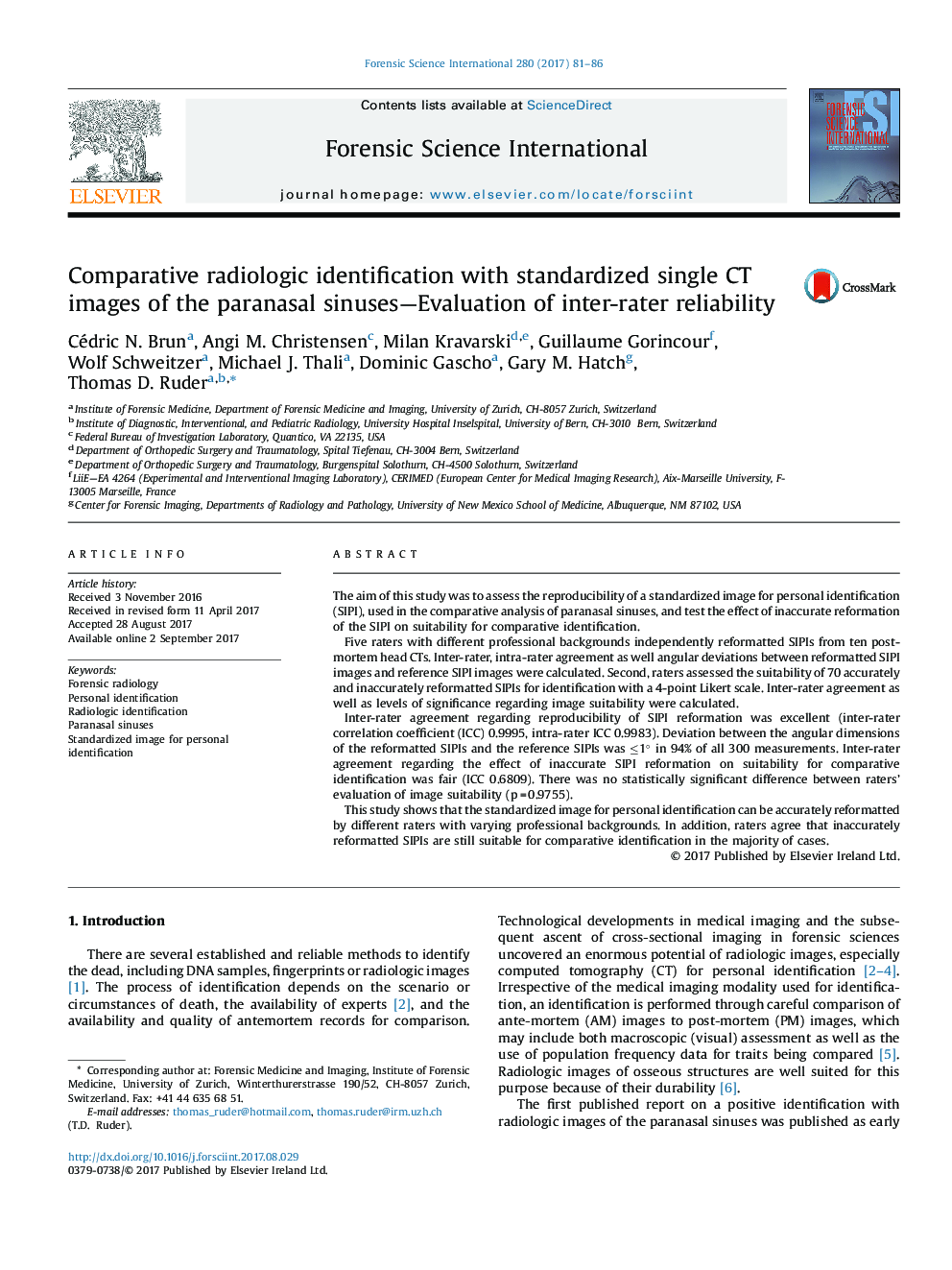| Article ID | Journal | Published Year | Pages | File Type |
|---|---|---|---|---|
| 4760235 | Forensic Science International | 2017 | 6 Pages |
â¢CT images of the head offer a reliable and rapid means of personal identification.â¢Identification can be achieved with a single standardized CT image of the head.â¢This single, standardized image is oriented parallel to the orbitomeatal plane.â¢Osseous landmarks are used as reference points for reformation of the image.â¢Reformation of this image has an excellent inter- and intra-rater reliability.
The aim of this study was to assess the reproducibility of a standardized image for personal identification (SIPI), used in the comparative analysis of paranasal sinuses, and test the effect of inaccurate reformation of the SIPI on suitability for comparative identification.Five raters with different professional backgrounds independently reformatted SIPIs from ten post-mortem head CTs. Inter-rater, intra-rater agreement as well angular deviations between reformatted SIPI images and reference SIPI images were calculated. Second, raters assessed the suitability of 70 accurately and inaccurately reformatted SIPIs for identification with a 4-point Likert scale. Inter-rater agreement as well as levels of significance regarding image suitability were calculated.Inter-rater agreement regarding reproducibility of SIPI reformation was excellent (inter-rater correlation coefficient (ICC) 0.9995, intra-rater ICC 0.9983). Deviation between the angular dimensions of the reformatted SIPIs and the reference SIPIs was â¤1° in 94% of all 300 measurements. Inter-rater agreement regarding the effect of inaccurate SIPI reformation on suitability for comparative identification was fair (ICC 0.6809). There was no statistically significant difference between raters' evaluation of image suitability (p = 0.9755).This study shows that the standardized image for personal identification can be accurately reformatted by different raters with varying professional backgrounds. In addition, raters agree that inaccurately reformatted SIPIs are still suitable for comparative identification in the majority of cases.
